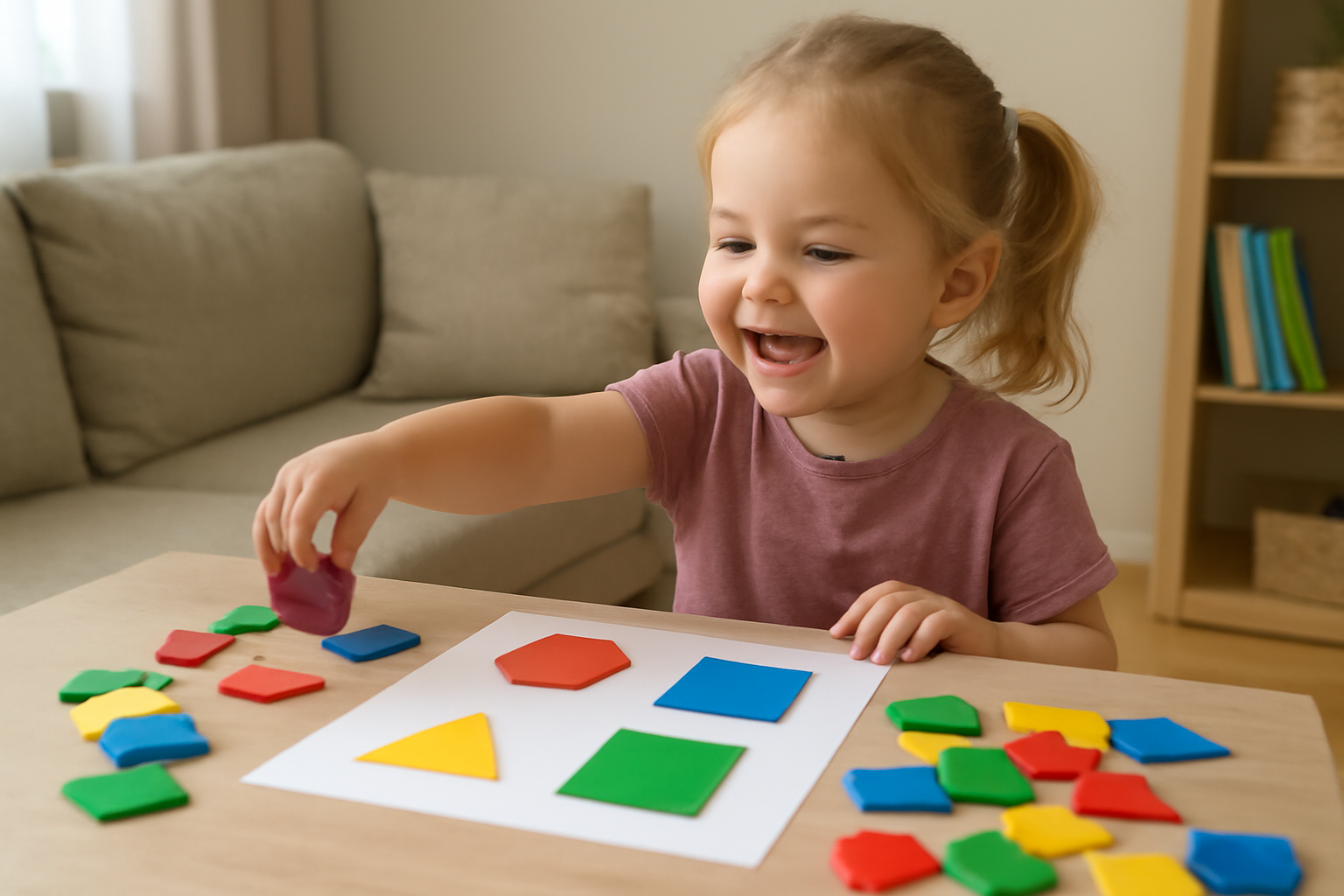Colors and shapes are some of the first concepts young children learn—and for good reason. Recognizing these basic visual elements supports language development, categorization skills, early math readiness, and visual discrimination. The best part? You don’t need a classroom or worksheets to teach them. With a few creative activities, you can make learning colors and shapes exciting and hands-on at home.
In this article, we’ll explore fun, easy-to-set-up activities that help preschoolers learn and remember their colors and shapes in meaningful ways.
Why Teach Colors and Shapes Early?
Learning to identify and name colors and shapes helps children:
- Build vocabulary
- Improve sorting and organizing skills
- Strengthen attention to detail
- Recognize patterns and attributes
- Prepare for future math and reading skills
It also empowers children to describe the world around them more clearly.
1. Color Scavenger Hunt
Turn your home into a learning playground with a color scavenger hunt.
Instructions:
- Give your child a basket and name a color (e.g., “Find everything you can that’s red!”)
- Let them explore and collect items of that color
- Talk about each object and where it was found
Variation: Use color cards as prompts, or hunt for rainbow colors in order.
Skills developed: color recognition, categorization, observation
2. Shape Sorting Station
Set up a simple station with cut-out shapes (circles, squares, triangles, rectangles) in different colors and sizes.
Activities to try:
- Sort by shape
- Sort by color
- Match shapes to outlines on a mat
- Create “shape families” (e.g., all small blue circles)
Tip: Use felt, paper, foam, or cardboard for variety.
3. Edible Shape Snacks
Involve snack time in the learning process.
Examples:
- Cut cheese or fruit into triangle, square, and circle shapes
- Use cookie cutters on sandwiches or tortillas
- Arrange crackers into a shape collage before eating
Talk about the names, colors, and sides of each shape as you snack.
4. DIY Color Mixing with Paint
Teach color theory by letting your child experiment with mixing paints.
Try:
- Red + yellow = orange
- Blue + yellow = green
- Red + blue = purple
Use paper plates, plastic trays, or resealable bags to minimize mess. Have your child predict what will happen before mixing.
Skills developed: cause and effect, creative expression, fine motor control
5. Shape and Color Hopscotch
Use painter’s tape or chalk to create a path of different colored shapes on the floor or sidewalk.
Instructions:
- Call out a command like, “Jump on the red square!” or “Walk to the blue triangle.”
- Let your child follow the path based on your directions
- Encourage them to call out commands to you too!
This combines gross motor skills with concept reinforcement.
6. Build with Colorful Blocks
If you have LEGO® or wooden blocks in various colors and shapes, use them for guided learning.
Ideas:
- Build towers by color (“Let’s make a green tower.”)
- Sort pieces into bowls by shape or size
- Create a “pattern train” using repeating shapes or colors
Encourage your child to describe what they’re building as they go.
7. Create a Color and Shape Collage
Provide magazines, construction paper, glue, and scissors for your child to create a collage.
Steps:
- Ask them to find all the red things in a magazine
- Or cut out circles only and glue them onto a paper
- Label each collage (e.g., “Blue Circle Collage”)
This activity reinforces visual discrimination and fine motor development.
8. Story Time with Colors and Shapes
Choose books that focus on shapes and colors to reinforce vocabulary.
Suggestions:
- Brown Bear, Brown Bear, What Do You See? by Eric Carle
- Mouse Paint by Ellen Stoll Walsh
- Color Zoo by Lois Ehlert
- Shapes, Shapes, Shapes by Tana Hoban
After reading, talk about the shapes or colors mentioned and go on a “book hunt” to find them in your home.
9. Shape Tracing with Household Items
Give your child paper and crayons and let them trace objects around the house.
Ideas:
- Cups and plates for circles
- Books for rectangles
- Blocks for squares
- Paper cutouts for triangles or stars
Tracing helps with hand-eye coordination while reinforcing shape knowledge.
10. Sensory Bin for Colors and Shapes
Create a sensory bin using dry rice, beans, or sand and hide colored or shaped objects inside.
Instructions:
- Give your child tongs or a scoop
- Ask them to find “all the yellow stars” or “every triangle”
- Sort them into matching bowls
This hands-on activity is great for tactile learners and keeps children engaged longer.
Learning Through Everyday Moments
Colors and shapes are all around us, making them easy to reinforce throughout the day. Point them out during walks, while cooking, or even during bath time.
Remember:
- Repetition is key
- Keep the tone playful and encouraging
- Praise curiosity and exploration over perfection
By turning everyday materials into playful learning tools, you’re giving your child a strong start in early literacy and math—one red circle at a time.
